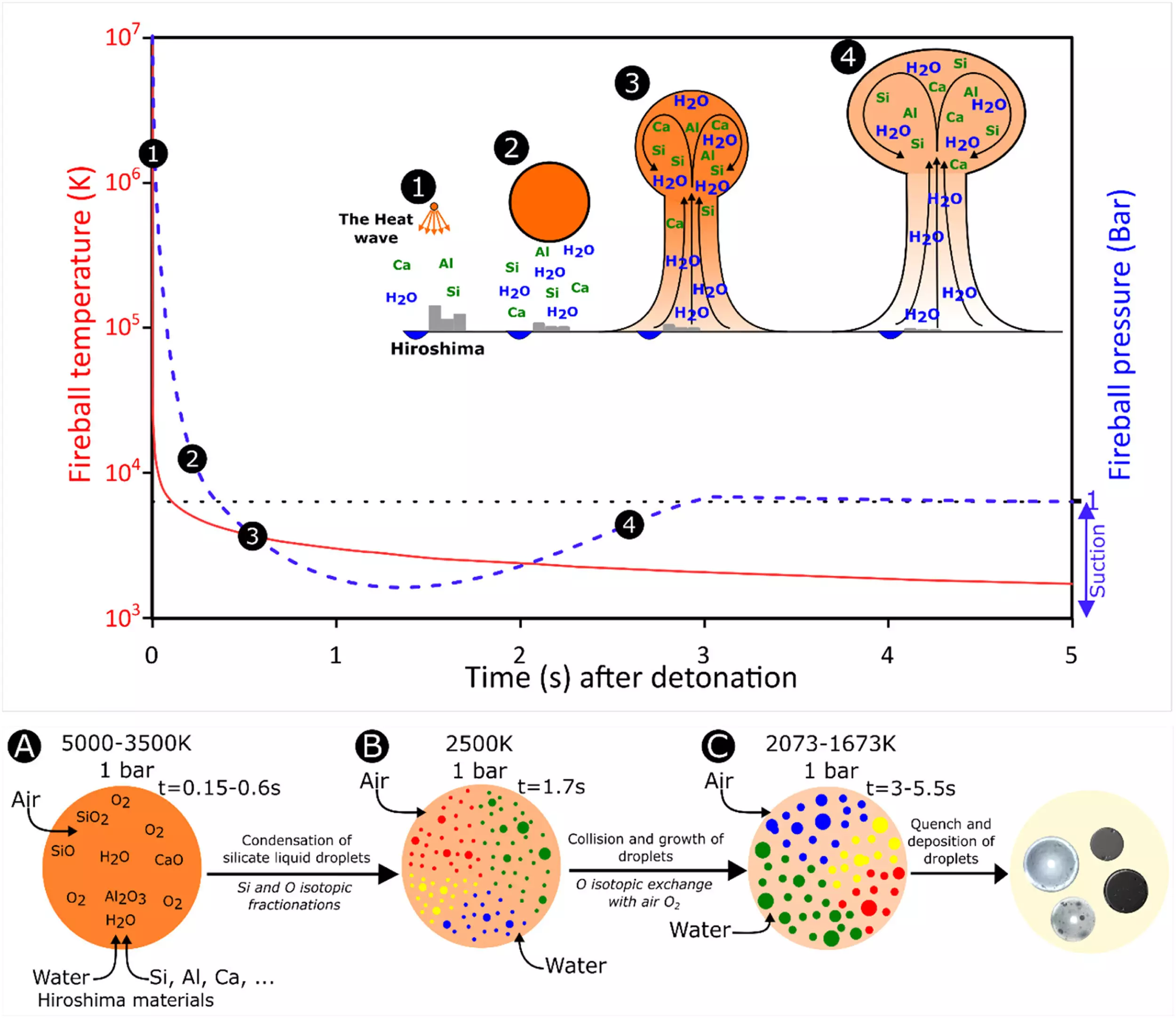The atomic bombing of Hiroshima, Japan, in August 1945 by the United States has left a long-lasting impact on the city and its residents. The devastating event resulted in the deaths of hundreds of thousands of people and has continued to affect the population through elevated rates of cancer from radiation exposure. Recent research on Hiroshima Bay has unveiled a new type of debris called Hiroshima glasses, formed from the vaporized materials of the bomb and the surrounding environment.
A study published in Earth and Planetary Science Letters examined the chemical and isotopic compositions of Hiroshima glasses to understand how they were formed during the nuclear explosion. Researchers, led by Nathan Asset from Université Paris Cité in France, discovered that rapid condensation within the nuclear fireball was the primary process behind the formation of these glasses. The study identified four types of glasses within the 94 specimens of fallout debris: melilitic, anorthositic, soda-lime, and silica.
The researchers reconstructed the formation of the Hiroshima glasses, indicating that the plasma fireball exploded above the city with specific temperatures, pressures, and radii. The immediate aftermath of the explosion involved the vaporization of city materials such as concrete, iron, aluminum alloys, industrial glass, and soil, which mixed with sand, river water, and the atmosphere to create the different types of glasses.
The isotopic composition of the silica within the Hiroshima glasses indicated values that were similar to those found in calcium-aluminum-rich inclusions (CAIs) of primitive meteorites. The research team used these results to determine the sequence in which the different types of glasses formed, with melilitic glasses being the first to form, followed by anorthositic, soda-lime, and finally pure silica.
Implications and Comparisons
While the composition of the Hiroshima glass formation environment differs from that of CAIs, understanding the processes that occurred during the creation of these glasses provides insights into the origins of our solar system. By comparing the conditions and timelines of the Hiroshima glass formation to those of the solar accretion disk, researchers can gain a better understanding of the evolution of our solar system and the materials that make it up.
The discovery and analysis of Hiroshima glasses shed light on the events that occurred during the atomic bombing of Hiroshima in 1945. The study not only provides valuable information about the formation process of these glasses but also highlights the long-term impacts of nuclear events on the environment and human health. Further research in this area can help us unravel the mysteries of our solar system’s origins and development.


Leave a Reply